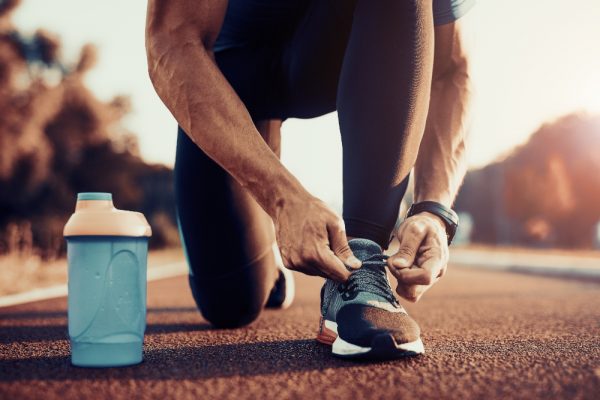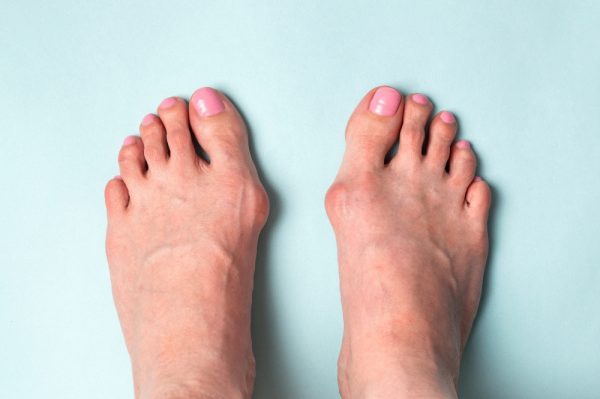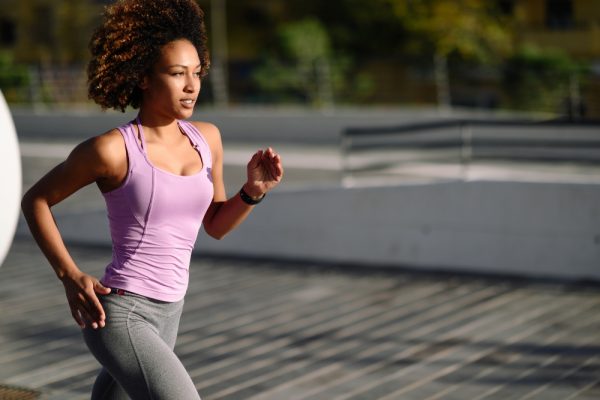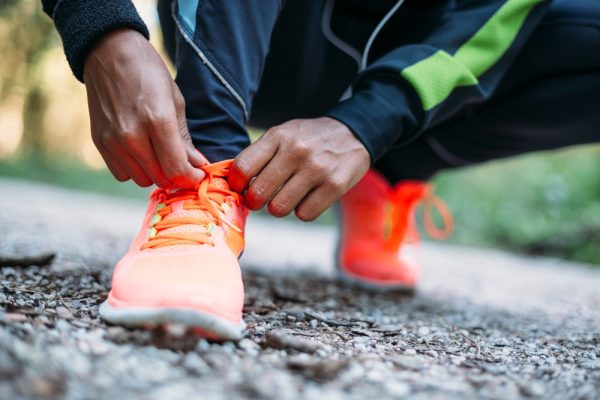Bunions can cause a great deal of pain for runners. The strain and impact of this intense activity can cause extreme swelling and aching around your toes and the front pad of your foot.
In this article, we’re talking all about bunions— for both those with and those afraid of developing this painful condition. Explore our advice for running with bunions, preventing them from forming or hurting and beyond.

What Exactly is a Bunion?
A bunion is a foot deformity, where the bone of your big toe tends to push inward toward the other toes.
Because your big toe bone curves towards your “pointer” toe instead of straight out, over time the base of the bone begins to jut out of the side of your foot.
Do you have a bump next to your big toe, but aren’t sure if it’s a bunion? Check out our other article on diagnosing a bunion to be sure.
What Causes Bunions?
Yes, runners develop bunions. However, bunions aren’t only influenced by strenuous activity.
Children can develop bunions due to juvenile rheumatoid arthritis or neuromuscular disorders like cerebral palsy or low muscle tone like Down Syndrome.
Bunions can emerge naturally later in life too, even for those who aren’t active. Those with bunions were likely born with problems with the shape of their foot or deformity in the ligaments of the metatarsophalangeal joint. In this way, genetics play a large role, but posture and footwear drastically influence bunion severity.

Why Do Runners Get Bunions?
Many runners with this toe deformity develop bunions over time because of wearing ill-fitting footwear or the wrong type of running shoe.
Running shoes with a significant drop between the heel and forefoot can lead to bunions after a few years of hitting the pavement and strain on your big toe bone.
The elevated design in your running shoe’s heel shifts your weight to your front pads and toes— and the tapered toe box design leads to cramming and stress, which can exacerbate the development of bunions.
How Can Runners Prevent Bunions from Forming?
You are more likely to develop bunions if you have a genetic predisposition, meaning if others in your family have bunions— you might be at risk of developing them too.
If you run or have an active lifestyle, here are two big recommendations from our podiatrists for preventing bunion formation:

- Choose a shoe with a flexible sole and flat heel. Shoes with too pronounced of an arch can cause stress on the front pad of your foot. Instead, choose a flexible sole that grants your foot more range of motion and helps to strengthen the foot muscles. Some fear that flexible shoes cause flat feet, but this is untrue.
- Wear proper fitted, supportive shoes all the time, not just when running. The right running sneakers matter just as much as your day-to-day shoe when you are at risk for developing bunions. Here are five shoe shopping tips for finding the right fit.
How Can Runners with Bunions Relieve the Pain?
Once bunions start to push out and form, runners can experience a slew of painful symptoms, including soreness around the bunion or throughout the foot, inflammation, redness and burning as the lump rubs inside your shoe.
Because of these annoying or debilitating reactions, it’s important for runners to take proper precautions prior to their activity.
If you are suffering from bunion pain, here are a few ways to find relief before or after running:

- Choose a shoe with a wide toe box. Shoes with a wider toe box give your toes room to spread and create more space for your bunion protrusion to reduce rubbing. Please do not confuse the width of your toe box with length; a shoe that’s too long can cause unwanted shifting and cramming, which will only irritate your feet and bunions.
- Use protective padding, taping or orthotics. In many cases, bunion pads or sleeves can help to prevent scraping and chafing inside of your shoes. Best Play Gear has great tips for running with bunions, including some helpful info on taping your feet to reduce bunion discomfort. A podiatrist can also recommend fitted orthotics to place inside of your shoes to help prevent bunion pain.
- Avoid going barefoot. Although it can be hard to find a proper fitted shoe that doesn’t rub, please don’t default to going shoeless or wearing poorly supportive flip flops when not running. Read more about the risks of going barefoot and if you must wear sandals, follow our tips for finding a comfortable and supportive pair.
- Medication. Certain anti-inflammatories can help to reduce your swelling and ease the pain caused by bunion strain, but the relief is temporary and will not fix the problem causing the pain in the first place.
- Opt for corrective surgery. For many sufferers, the pain just won’t cease. In some cases, surgery can help to adjust your protruding bone and grant you quick relief.
Bunion Treatment from the Professionals
Looking to reduce your bunion pain? Our podiatrists can take a look at your feet’s severity and offer recommendations for correcting or relieving your toe pain.
Explore our bunion treatment page and visit our contact page to make a quick appointment. Or, give us a call today at 239.936.5400.
Categorized in: Blog